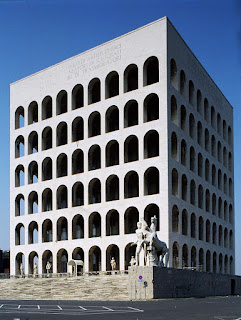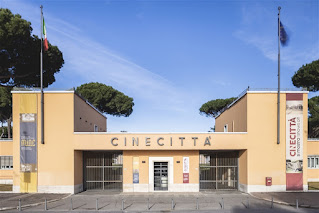Cesare Paciotti - shoe designer
Exclusive brand worn by many celebrities
The shoe designer Cesare Paciotti, whose chic collections have attracted a celebrity clientele, was born on New Year’s Day in 1958 in Civitanova Marche, a town on the Adriatic coast. His company, Paciotti SpA, is still headquartered in Civitanova Marche, as it has been since his parents, Giuseppe and Cecilia, founded their craft shoe-making business in 1948, producing a range of shoes in classical designs made entirely by hand. Today, the company, which trades as Cesare Paciotti, has major showrooms in Milan, Rome and New York and many boutique stores in cities across the world. The business, which also sells watches, belts, other accessories and some clothing lines, has an annual turnover estimated at more than $500 million (€437 million). Cesare Paciotti inherited the family firm in 1980 at the age of 22, having spent his late teenage years and early adulthood pursuing his interest in the arts by studying Drama, Art and Music at the University of Bologna, and then travelling to London, the United States and the Far East. When he returned home, he already had solid shoe making skills, having learned from his parents in their workshop as he grew up. Read more…
_____________________________________
Claudio Villa - singing star
The singer Claudio Villa, who sold 45 million records and won the Sanremo Music Festival four times, was born on New Year's Day in 1926 in the Trastevere district of Rome. The tenor, nicknamed 'the little king' on account of his diminutive stature and fiery temper, lent his voice to popular songs rather than opera although his voice was of sufficient quality to include operatic arias in his repertoire. His four wins at Sanremo, in 1955, 1957, 1962 and 1967, is the most by any individual performer, a record he shares with Domenico Modugno, the singer-songwriter who was at his peak in the same era. Villa recorded more than 3,000 songs and enjoyed a successful film career, starring in more than 25 musicals. His biggest hits included Ti Voglio Come Sei, Binario, Non ti Scordar di Me, Buongiorno Tristezza and Granada. He was a frequent guest on the Italian TV variety show Canzonissima, which was broadcast on state channel Rai Uno between 1958 and 1974. Later, he became a master of traditional Italian and Neapolitan songs. Born Claudio Pica, the son of a taxi driver, he was raised in a working class area, living in the shadow of Rome's main prison in Via Lungara. Read more…
____________________________________
Guglielmo Libri – book thief
Nobleman stole more than 30,000 books and documents
The notorious 19th century thief Guglielmo Libri, who stole tens of thousands of historic books, manuscripts and letters, many of which have never been found, was born on this day in 1803 in Florence. A distinguished and decorated academic, Libri was an avid collector of historic documents whose passion for adding to his collections ultimately became an addiction he could not satisfy by legal means alone. He stole on a large scale from the historic Laurentian Library in Florence but it was after he was appointed Chief Inspector of French Libraries in 1841 – he had been a French citizen since 1833 – that his nefarious activities reached their peak. As the man responsible for cataloguing valuable books and precious manuscripts across the whole of France, Libri had privileged access to the official archives of many cities and was able to spend many hours in dusty vaults completely unhindered and unsupervised. He was in a position to “borrow” such items as he required in the interests of research with no pressure to return them. Where the removal of a book or document was forbidden, he would smuggle them out under the huge cape that he insisted on wearing. Read more…
_____________________________________
Valentina Cortese – actress
Vibrant performer made more than 100 films
Film star Valentina Cortese was born on this day in 1923 in Milan. She had an acting career lasting nearly sixty years and won an Academy Award nomination for her performance as an ageing, alcoholic movie star in Francois Truffaut’s Day for Night in 1973. Cortese was born to a single mother, who sent her to live with her maternal grandparents in Turin when she was six years old. She enrolled in the National Academy of Dramatic Arts in Rome at the age of 15 and made her screen debut in 1940. This paved the way for her first internationally acclaimed film in 1948, an Italian adaptation of Les Miserables with Gino Cervi and Marcello Mastroianni, in which she played the roles of both Fantine and Cosette. She then appeared in the British film The Glass Mountain in 1949 and also appeared in many American films of the period, while continuing to work in Europe with directors such as Michelangelo Antonioni, Federico Fellini and Francois Truffaut. After signing a contract with 20th Century Fox, Cortese starred in Malaya with Spencer Tracey and James Stewart and The House on Telegraph Hill with Richard Basehart and William Lundigan. Read more…
________________________________________
Capodanno in Italy
Toasting the New Year the Italian way
New Year’s Day is called Capodanno in Italy, which literally means ‘head of the year’. It is a public holiday, and schools, Government offices, post offices and banks are closed. After a late start following the New Year’s Eve festivities, many families will enjoy another traditional feast together, either at home or in a restaurant. Visitors and residents will attend church services throughout the country before sitting down to a festive meal and toasting the new year with a glass of good Prosecco. Rai Uno often broadcasts a New Year’s Day concert live. The Catholic Church remembers cardinal-priest Giuseppe Maria Tomasi di Lampedusa who died on this day in 1713. He was the son of the Prince of Lampedusa in Sicily but he renounced his inheritance and joined a religious order. Later in life he worked to reform the church and was created a cardinal-priest by Pope Clement XI who admired his sanctity. He was buried in a church near his home after his death but his remains were later transferred to the Basilica of Sant’Andrea della Valle in Rome and he was canonised by Pope John Paul II in 1986. Read more…
______________________________________
Book of the Day: Mid-sized Manufacturing Companies: The New Driver of Italian Competitiveness, edited by Fulvio Coltorti, Riccardo Resciniti, Annalisa Tunisini and Riccardo Varaldo
The structure of Italian industry is characterized by a predominance of small sized companies and the presence of very few large companies. For a long time a conviction was shared among scholars and practitioners that the strength and safety of Italian industry were based on its industrial districts, that is, the system of interdependent and co-localized small companies which derive their competitive force from an effective and efficient division of labour. Mid-sized Manufacturing Companies: The New Driver of Italian Competitiveness stresses the idea that a new, vital and promising phenomenon for the competitiveness of Italian industry is focused on mid-sized companies, and the systems of interconnected firms that form a constituent part of their business model. These companies, which originate largely from districts and other local production systems, are a strong entrepreneurial force complementing the districts that have characterized Italy and made Italian industry famous worldwide. A quantitative and qualitative analysis of these firms is provided in this book. Business models and strategies implemented by a number of successful Italian mid-sized manufacturing companies are also explored. Consequences in terms of management and industrial policies are provided. A final look at the German Mittelstand gives a useful comparison.Authors Fulvio Coltorti, Riccardo Resciniti and Riccardo Varaldo are prominent Italian economists. Annalisa Tunisini is Professor of Marketing and Strategy at the Catholic University of the Sacred Heart in Milan.

.jpg)
.jpg)



.jpg)
.jpg)


.jpg)


.jpg)

.jpg)





